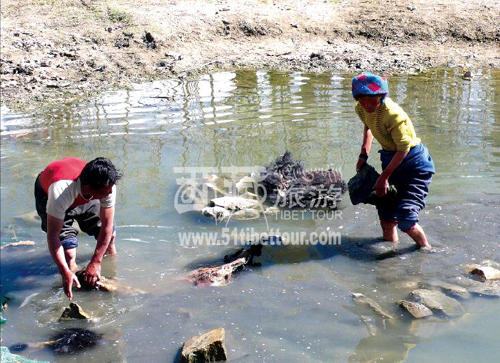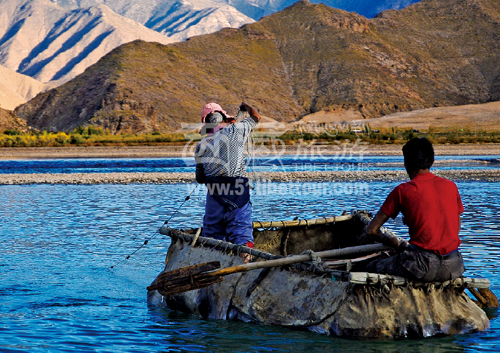
Tibetan people soak cow skins in river water. (Photo from www.51tibettour.com)

Two people cross a river with a Tibetan cowhide raft. (Photo from www.51tibettour.com)
Cowhide raft is the major means of water transportation for Tibetan people, which was used as early as the Tang Dynasty.
The structure of cowhide raft is simple yet its making process is troublesome.
The frame of cowhide raft is made of wood while its body is made of ox skins. A raft needs four pieces of ox skins. Before making the raft, people immerse the fresh cow skin and wood in water for several days to soften them and then remove the ox hair.
After that, they sew the four pieces of ox skins together with rope made of tail of Tibetan yak. The sewing work is very crucial which may influence the service life of the raft, which is usually one to three years.
The keel of the raft is made of willow, which is strong enough and able to protect against dampness. A layer of rap oil will be applied in the cowhide skin. When the whole structure of the raft is completed, the handicraftsmen will dry the raft under sunshine.
One cowhide raft usually weights 30 to 40 kilometers kilogram, so it is easy to go wherever the boatmen wants to go.
According to Tibetan tradition, the neighbors will come to help whoever makes the raft, and the host will treat them with highland barley wine.
A raft is usually about three meters long, one meter high and two meters wide, which can carry ten people.
